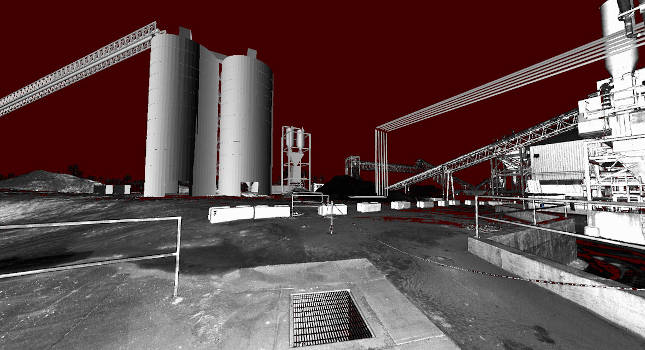Oversized actuators can add unnecessary costs to the damper if improperly sized

Unlike commercial HVAC dampers, operating torque for heavy duty industrial dampers is not determined on a square foot face area basis. High pressures and velocities, as well as bearing friction and axle seals, can create elevated torque requirements that have to be considered in each application. However, torque requirements can also be over-estimated if calculated at the maximum pressure and velocity rating of the damper. This sizing method results in oversized actuators which add unnecessary cost to the damper.
To avoid this, it is recommended to calculate torque requirements based on actual operating conditions as described below.
Torque calculations can be broken into two categories — static torque and dynamic torque.
Static Torque
Static torque, by definition, is contributing torque sources that are basically constant throughout the entire rotation of the damper blade(s). Sources of static torque are:
- Bearing torque
- Axle seal torque
- Jamb seal torque
- Linkage torque
- Unbalanced torque.
Bearing Torque
Ball bearings have relatively low friction that is only a function of the bearing seal drag.
Sleeve bearing torque is required to overcome friction caused by bearing material, axle diameter, and load on the bearing. Load on the bearing is comprised of multiple factors including weight and air velocity.
Axle Seal Torque
Most damper manufacturers offer two types of axle seals, o-ring shaft seals or double-gland seals.
The o-ring shaft seal has the advantage of lower frictional torque and is more compact to the damper frame. The double-gland axle seal requires the bearing to be mounted outboard. The seal is more tolerant of solids, elevated temperature and chemicals within the duct. Caution must be used with this seal type as it is possible to tighten double-gland packing to the point where the axle will not turn.
Jamb Seal Torque
Rectangular dampers are often equipped with flexible metal (compression) sealing strips which are in contact with the blade ends throughout rotation. Fiberglass or ceramic tadpole seals are mounted to the damper side frames (jambs) and only contribute to the torque in the damper closed position.
Linkage Torque
Linkage torque is dependent upon mounting orientation, blade action and axle diameter. The torque value varies as a function of blade rotation and initial installation position, however, the most extended position is used conservatively. Linkage torque is assumed to act in the direction of causing blades to close.
Unbalanced Torque
Some damper blades are not symmetrical about the axle center line, creating an unbalanced torque that tends to open or close the damper. Round damper blades are often designed with the blade skin fastened to one side of the axle. This could be considered a dynamic torque if the mounting orientation and installation is known.
Dynamic Torque
Dynamic torque is a force which changes as the rotation of the damper blades change. Airflow acts differently against the unit creating a changing force. Examples are:
- Velocity pressure
- Static pressure
- Blade seal torque.
Velocity Pressure
A damper blade can be modeled as an airplane wing where air flowing over it causes lift until stall conditions are reached. The moving air causes an effective pressure, which acts at one-fourth of the blade width from the leading edge. Velocity torque is usually calculated at standard air density of
0.075 lb./ft3 (ambient) to address start-up. For elevated temperatures, torque should also be calculated at actual velocity and density conditions.
Static Pressure
Pressure torque results from the unbalanced pressure on the blades due to overlap on rectangular dampers or blade stops on round dampers. Torque is required to “pop-open” a damper.
Blade Seal Torque
Dampers equipped with blade seals require additional torque at the closed position to ensure the blade seals function properly. The magnitude of this torque varies widely with the seal material used. Seals made of a flexible pressure activated lip require very little force to compress and make an effective seal. Alternatively, dense sponges and solid rubbers like those used for isolation and bubble-tight dampers require significantly higher torque.
Total Required Torque
When calculating the total required torque to effectively operate the damper, the summation of all applicable torque requirements at each critical blade position (start-to-open, start-to-close and full close) as previously described, and based on damper application and orientation, is required. Once the torque at each position is known, then the worst case position can be used to select the appropriate torque value.
Actuator Torque
To ensure the actuator will properly actuate the damper over the life of the unit, the standard practice is to apply safety factors above and beyond the required torque to overcome manufacturing tolerances, typical wear and possible system changes over time. Safety factors can be applied as follows:
Clean air:
- 125% of damper torque for two position or floating operation
- 140% of damper torque for modulating (proportional) operation
Dirty air:
- 200% to 300% of damper torque to overcome dirt build-up over time
The type of actuator operation will also be affected by these torque calculations. If the damper is used in a fully open or fully closed application (i.e., two-position actuators) the actuator is generally selected for the worst case torque requirement from each of the four discussed above. If the damper is designed with a fail-safe (i.e., spring return) requirement, the fail direction (fail-open vs. fail-closed) can greatly affect the actuator model or size selected.
|
|
48 x 48 HCD-230 Damper Size |
||
|
Velocity (fpm) |
1,000 |
2,500 |
5,000 |
|
Pressure (in. wg) |
4 |
8 |
15 |
|
Bearing Type |
Sleeve |
Sleeve |
Ball |
|
Blade Seals |
None |
Yes |
Yes |
|
Jamb Seals |
None |
Yes |
Yes |
|
Shaft Seals |
None |
O-Ring |
Double Gland Type |
|
Torque Required (in-lbs) |
137 |
365 |
853 |
|
Relative Actuator Cost |
1.0 |
3.2 |
32.5 |
As you select your damper and accessories, please be aware that the options you choose will affect the amount of torque (and actuator size and cost) needed to operate the damper. By arbitrarily selecting the worst case scenario, significant cost will be added to the project. The adjacent table shows three 48 x 48,
HCD-230 dampers with different operating conditions and accessories selected. You can see
the torque requirements range from 137 in-lbs to
853 in-lbs.
When selecting an actuator, keep in mind that many damper manufacturers have product selection programs. Using a selection program will walk you through the selection process to ensure you select the correct actuator size for your specific application.
Bill Lampkin is an industrial product manager with Greenheck.



